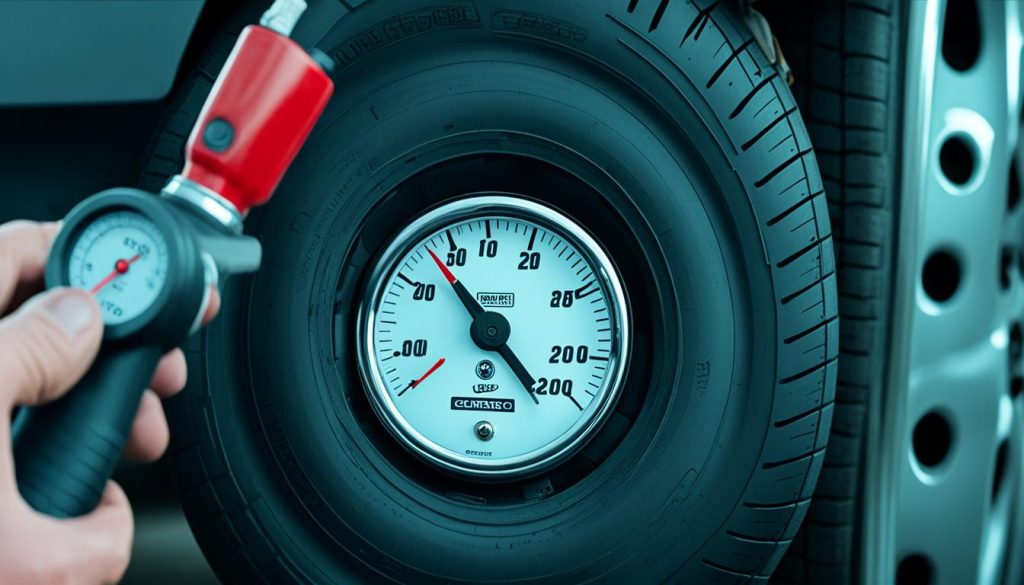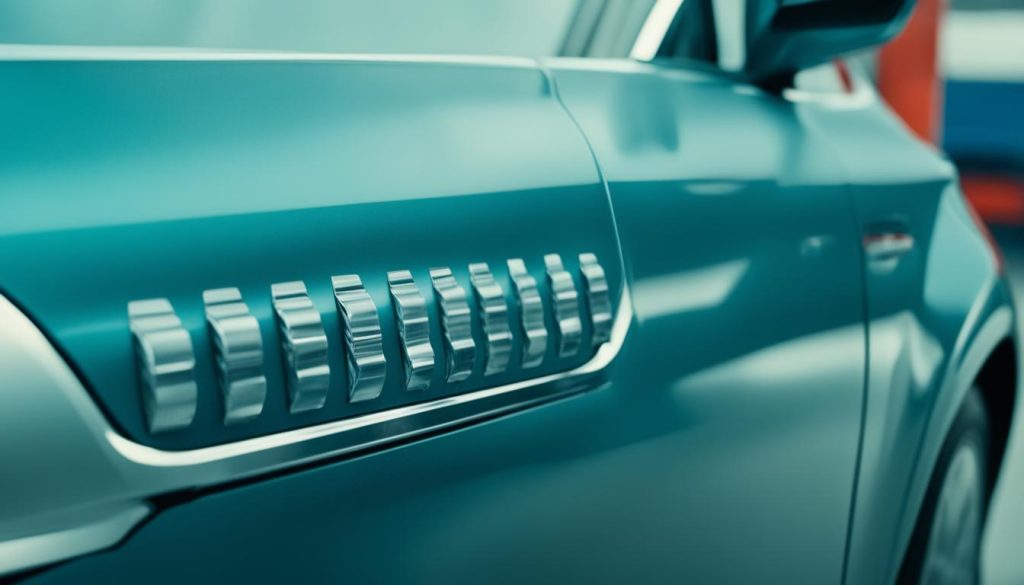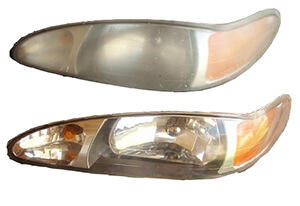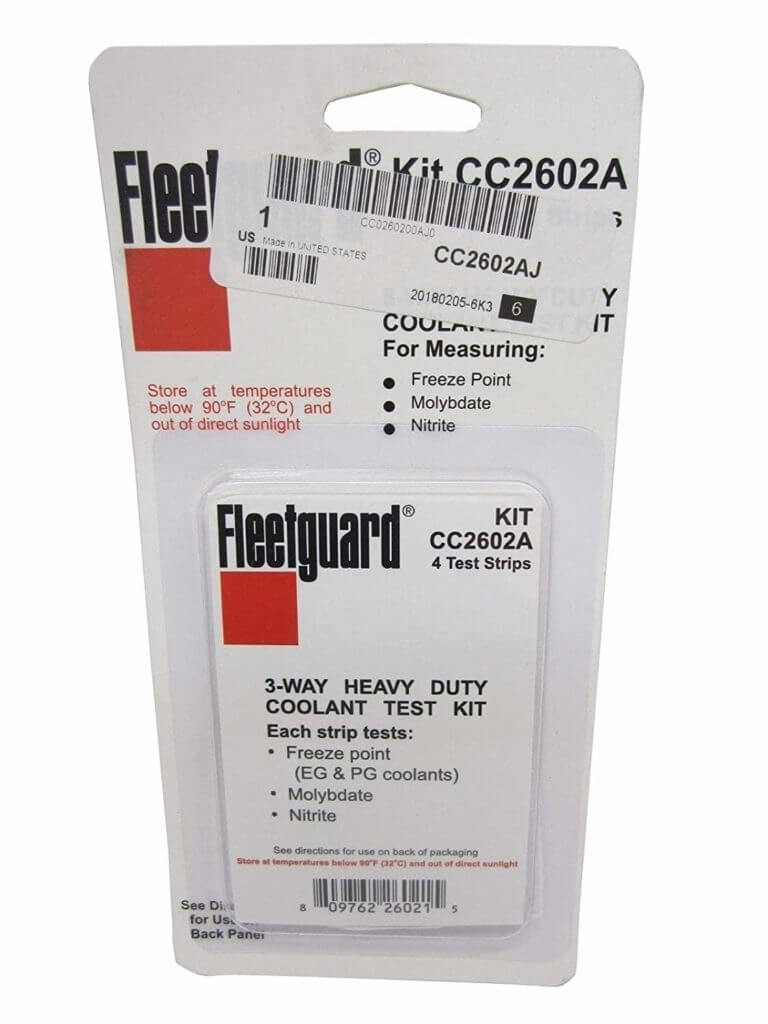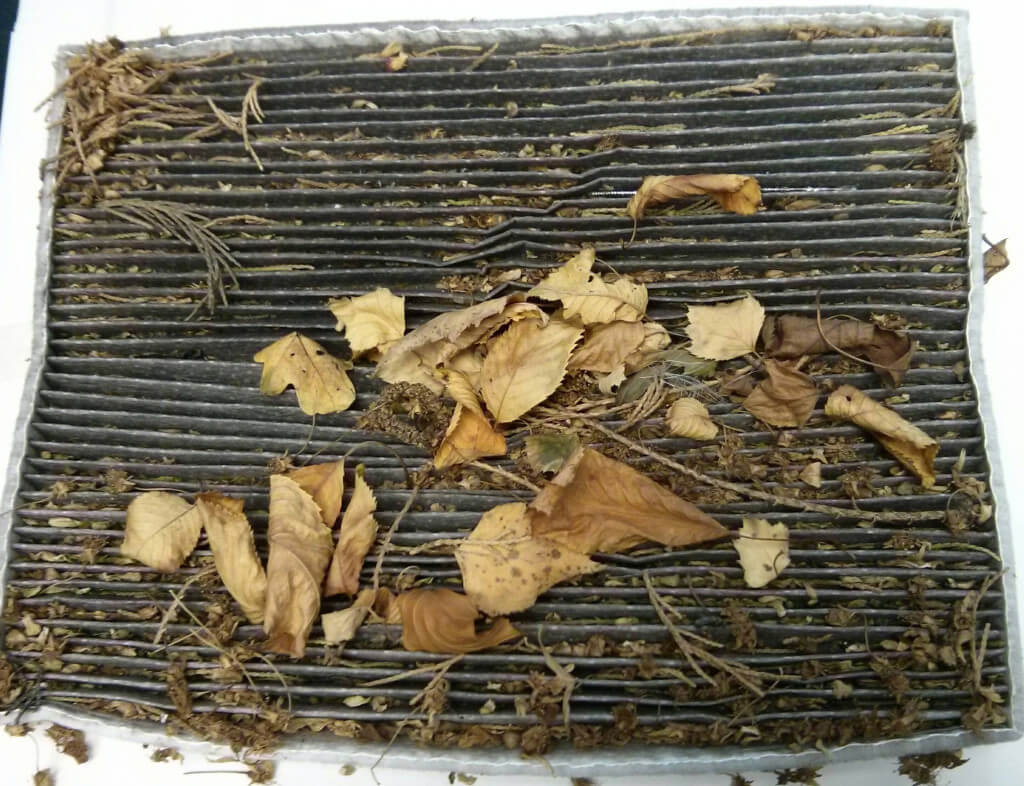Prepare your car for winter — tips to winterize your car and keep you safe
Winter puts additional stress on your car’s electrical, heating, fuel and ignition systems, so it’s important to prepare your car for winter to prevent no starts when really cold weather hits. Plus, there are many other things you can do to prepare your car for safe winter driving. Here’s what to check before winter.
Prepare your car for winter with a complete battery test
Your car battery generates power through a chemical reaction and that 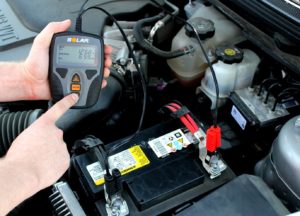 reaction slows down in cold weather, even if you have a relatively new battery. A slowed chemical reaction means there’s less power available to start your cold engine that actually needs more power to start in winter.
reaction slows down in cold weather, even if you have a relatively new battery. A slowed chemical reaction means there’s less power available to start your cold engine that actually needs more power to start in winter.
If your battery is old, it can leave you stranded
That’s why it’s so important to having your car battery tested at your local mechanic or any auto parts store before cold weather hits. Don’t be fooled into thinking that you can tell a car battery’s condition just by checking voltage. That only tells you that the battery is good on the day you tested it. It can’t predict how it will work weeks from now when the deep-freeze hits.
Most auto parts stores will test your battery for free with a state-of-the-art tester. Those testers look at not only the current state of charge, but also the battery’s internal resistance and capacitance. The resistance, capacitance are reliable predictors of your battery’s overall condition.
If the battery results are on the edge, replace your battery now before it leaves you stranded.
Learn how to test a car battery
Learn how to clean battery terminals
Learn how to test your car’s alternator
Learn how to install a new car battery
How long do car batteries last?
What IS an AGM battery?
Keep your battery charged by driving it regularly or charging it when not in use
Winter driving uses a lot of power to run your heater, headlights, wipers, defogger, heated mirrors and heated seats; all at the same time. If you drive short trips (less than 10 miles in cold weather) or drive in stop and go traffic, your vehicle’s charging system can’t provide enough power, so the balance has to come from your battery, leaving your battery in a constant state of discharge. A constantly discharged battery dramatically reduces battery life and is likely to leave you stranded.
If you work remotely and leave your car unused for long periods, that too can cause your battery to be in a constant state of discharge. Why? Because all batteries self discharge inbetween charges and the computers in your car use a small amount of power 24/7.
How to keep your battery fully charged
Drive it on the highway for at least 20-30-minutes once a week, or
Purchase a battery maintainer and connect it to your battery once a week to bring it back to full charge.
Check your serpentine and other drive belts and belt tensioner before the snow flies
The drive belts run your alternator, and if they’re worn or slipping, the alternator can’t do it’s job.
Modern EPDM drive belts don’t crack like the older Neoprene belts, so you can’t tell a belt’s condition by looking for cracks. You have use a belt wear gauge. EPDM belts and automatic belt tensioners last about 100,ooo miles. If your belts are hitting that milestone, it’s time to change the belts and tensioner. Otherwise it’s time to check the belts for wear. Belt wear gauges cost less than $8 and are available online and at many auto parts stores.
Replace worn spark plugs for best starting in winter
It’s not true that all spark plugs last 100,000 miles or more. Some engines require spark plug changes every 30,000, 40,000, or even 60,000 miles; and that even if your engine uses platinum or iridium spark plugs! Check your owner’s manual to find the manufacturer’s recommendation for when to change them. If you’re within 20% of that mileage, change them now and enjoy better starting all winter.
Keep this in mind; if the plugs are rated at 100, 000 miles and you have 80,000 on the odometer, your plugs are 80% worn. They’re already starting to misfire, causing your gas mileage to suffer. Most drivers will only replace them once in the life of their vehicle.
Worn spark plugs will cause hard starting and no-starts in cold weather
Even in the best of circumstances, it’s much harder to ignite a  cold air/fuel mixture in winter. Worn spark plugs makes it even harder. And, if the engine starts and stalls, you wind up with a flooded engine, making it almost impossible to start again.
cold air/fuel mixture in winter. Worn spark plugs makes it even harder. And, if the engine starts and stalls, you wind up with a flooded engine, making it almost impossible to start again.
So why not change them now and enjoy better starts and gas mileage? Read this post on Spark Plugs. Then read this one on spark plug MYTHS.
Replace your wiper blades with “winter blades”
You have to see well in winter when ice and snow are packed onto your windshield, Prepare your car for winter by installing winter wiper blades. Winter blades are covered in a rubber boot that prevents snow and ice from packing inside the squeegee’s support arms. So they keep your windshield clean even in heavy snow. Many newer vehicle come with beam style blades that don’t have support arms. If you have those on your vehicle, make sure they wipe without streaking. If you see streaks now, they’ll only get worse as road salt and grit wear them down even more. Replace them now for clearer visibility. Read this article on the difference between traditional and beam style blades.
Check your headlights
It gets dark earlier in winter so you’ll be using
your headlights more. The UV coating on plastic headlights degrades over time and the lenses turn cloudy, reducing road illumination by 70%. You don’t have to replace the entire headlight to see clearly again. Just buy a headlight restoration kit (about $25) at any auto parts store. I like the kit from Sylvania best because it contains a bottle of remover to help get rid of the old UV coating, AND it also contains a bottle of NEW UV coating to wipe onto the lenses after you’ve buffed them. I haven’t seen any other kit that includes those two items. Most include just sandpaper and plastic polishing compound. You can buy those kits and buff up your headlights. But if you don’t recoat them with new UV coating, you’ll be doing the job all over again in six months. Read this article on headlight restoration kits.
Replace old headlight bulbs
And don’t forget about the headlight bulbs. Pull out one 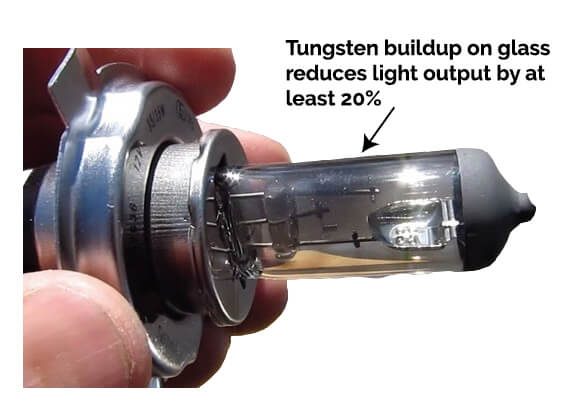 of your low beam headlight bulbs and examine it. The glass should be crystal clear. If you see grey or brown deposits on the inside of the bulb, replace both bulbs. Those deposits can reduce nighttime visibility by almost 300-ft.
of your low beam headlight bulbs and examine it. The glass should be crystal clear. If you see grey or brown deposits on the inside of the bulb, replace both bulbs. Those deposits can reduce nighttime visibility by almost 300-ft.
How to replace a headlight bulb
Fix a cloudy headlight lens
Fix a dim headlight
When to replace headlight bulbs
Check your coolant
Driving on worn out coolant is a bad idea all year ‘round,
but it’s especially bad in winter. Worn coolant can freeze and destroy your engine, but you probably already knew that.
However, there’s more to coolant than just freeze protection. Fresh coolant prevents corrosion damage to your heater core, radiator, and water pump. The corrosion comes in two forms, ordinary corrosion caused by the 50/50 solution of water and coolant, and the kind caused by electrolysis. Electrolysis occurs when you have dissimilar metals and an electrolyte. And that’s exactly what you have in a vehicle. You’ve got aluminum, steel, magnesium, copper, and cast iron all connected electrically by the coolant. Fresh coolant contains additives to combat electrolysis. Once that additive wears out, galvanic action begins starts transferring metal from one surface to another. The heater core and radiator are the first to go. They can spring leaks or plug up. A heater core repair alone can cost upwards of $1,000. If you can’t remember the last time you changed the coolant, change it now. It costs far less than the repairs you’ll face later. See my article on choosing the right coolant.
How to test coolant condition before winter
See this article for tips on how to test your coolant for:
freeze protection
pH balance
electrolysis protection
Check the tread depth on your tires with a tread depth gauge
Studies show that once tread depth reaches 4/32,” stopping 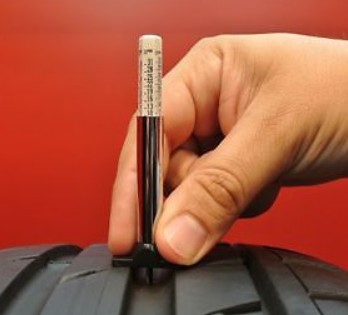 distances start increasing dramatically. So it doesn’t pay to drive in winter on worn tires. Forget about the old “penny tip” and buy a real tire tread depth gauge (available at any auto parts store for around $8). Check the tread depth on the outer and center tread of each tire. If they’re approaching 4/32″ or less, it’s time for new tires. Rather than wait until next spring, buy new tires now and get better traction and stopping power through the winter. Driving on good tread is one of the best ways to avoid winter accidents.
distances start increasing dramatically. So it doesn’t pay to drive in winter on worn tires. Forget about the old “penny tip” and buy a real tire tread depth gauge (available at any auto parts store for around $8). Check the tread depth on the outer and center tread of each tire. If they’re approaching 4/32″ or less, it’s time for new tires. Rather than wait until next spring, buy new tires now and get better traction and stopping power through the winter. Driving on good tread is one of the best ways to avoid winter accidents.
Or, consider buying winter tires
4WD and AWD drive vehicles are great for getting you going from a dead stop. But they don’t help at all for stopping or avoiding slipping in turns. Only winter tires can do all three: better traction from a stop, better grip in turns and better stopping power.
I won’t kid you, winter tires are expensive. But consider this; a single slide into the curb can easily cost upwards of $2,000 in repairs, even if there’s no body damage. If there’s body damage, a simple curb kiss can instantly turn into a $5,000 repair, weeks in the shop and an insurance claim that will probably raise your rates.
When you consider how much you’ll pay for your collision deductible and increased premiums, winter tires start to sound like a bargain. If they prevent you from having a single accident, they pay for themselves in just one winter.
See this article on how much better winter tires are compared to your all-season tires. If you decide to buy winter tires, check out my top choices here.
When to buy new tires
How to buy new tires
What’s the difference between economy and premium tires?
Do you really need a tire pressure sensor rebuild when you get new tires?
Should you buy a road hazard warranty?
How does outside temperature affect tire pressure?
Is tire rotation really necessary?
Change the cabin air filter to prepare your car for winter
A plugged cabin air filter dramatically reduces air flow through
the heater and defroster vents. So it takes longer to defrost the windshield and heat up the vehicle. Plus, it puts added strain on the blower motor, causing it to fail early (about a $200 repair). You’ll have to change the filter eventually, so change it now and enjoy faster defrost times and warmer toes.
Prepare your car for winter by lubricating door and trunk locks
Sure you’ve got keyless entry, but that doesn’t mean you can ignore basic lock cylinder maintenance. If you don’t lubricate them and your key fob fails ever fails, they may not unlock due to corrosion. Spray dry teflon lube spray (available at home centers and auto parts stores) into each lock and turn the key several times to distribute the lube. That’ll keep them in shape in case you need to manually open the door or trunk.
Lubricate weatherstripping and window channels before winter
Sleet and rain can seep into door gaps and window channels and freeze them shut. If you try to force the door open, you can rip the weatherstripping apart ($150 for new weather-stripping). And, if you try to operate a frozen window, you can damage the window regulator mechanism (a $300 repair). Prevent damage by spraying the door weather-stripping and window channels with a generous application of aerosol silicone spray (from any home center or auto parts store).
Check and recheck your tire pressure
Tire pressure is dependent on outside temperature. Pressure drops by about 1-psi. for every 10° of temperature drop. If it was 70° outside when you last checked your tires, they’ll be 7-lbs. low when the outside temperature dips to 0°F. That’s too low for safe driving. So check them now, and again as it gets even colder.
Check tire pressure when the tires are cold (haven’t been driven for at least 3 hours).
Get a good ice scraper and snow brush
There are ice scrapers and then there are really good ice scraper/brush combos. This one is my favorite
Pack a winter emergency kit
A winter emergency kit isn’t just for long trips. In cold weather it can take hours for a tow truck to arrive. You need emergency supplies to change a tire yourself and keep warm in the process. Here’s how to build a winter emergency kit.
© 2012 Rick Muscoplat
Posted on by Rick Muscoplat
#Tips #prepare #car #winter #Ricks #Free #Auto #Repair #Advice #Ricks #Free #Auto #Repair #Advice






